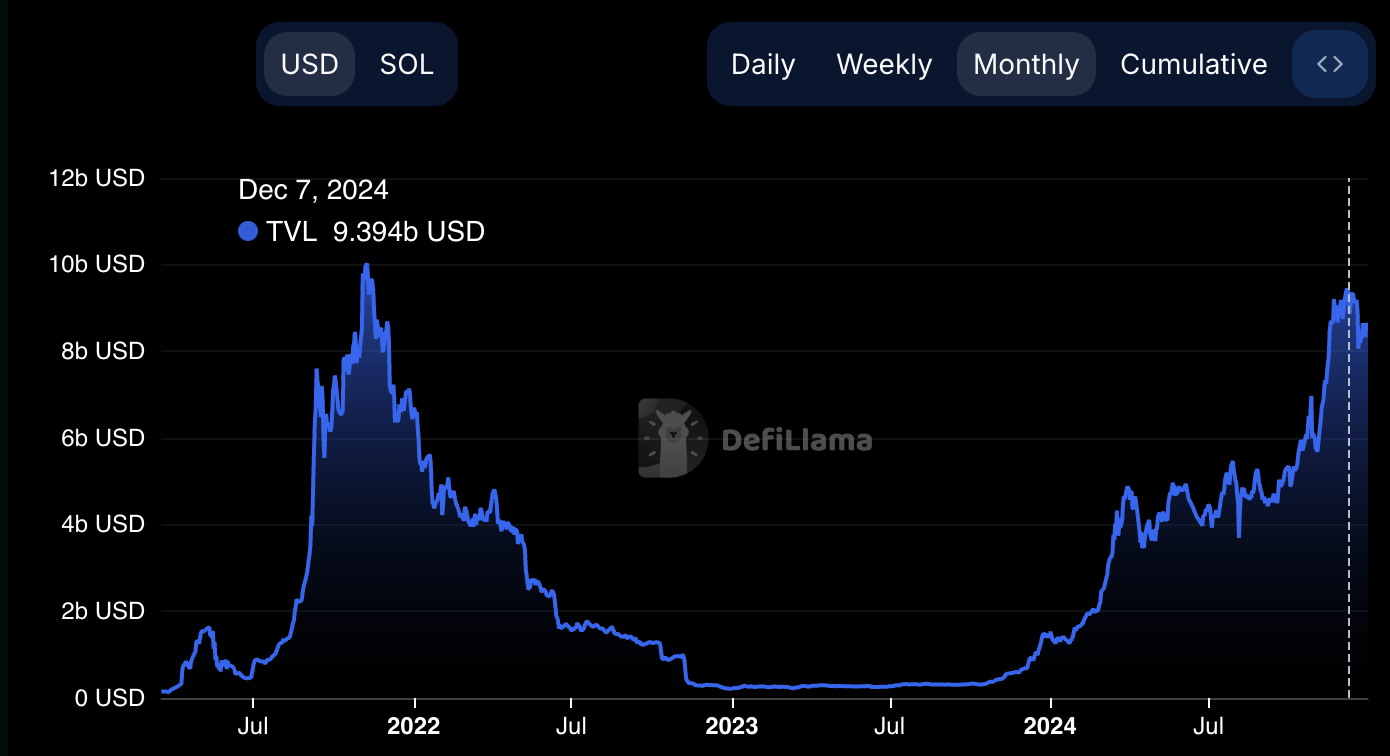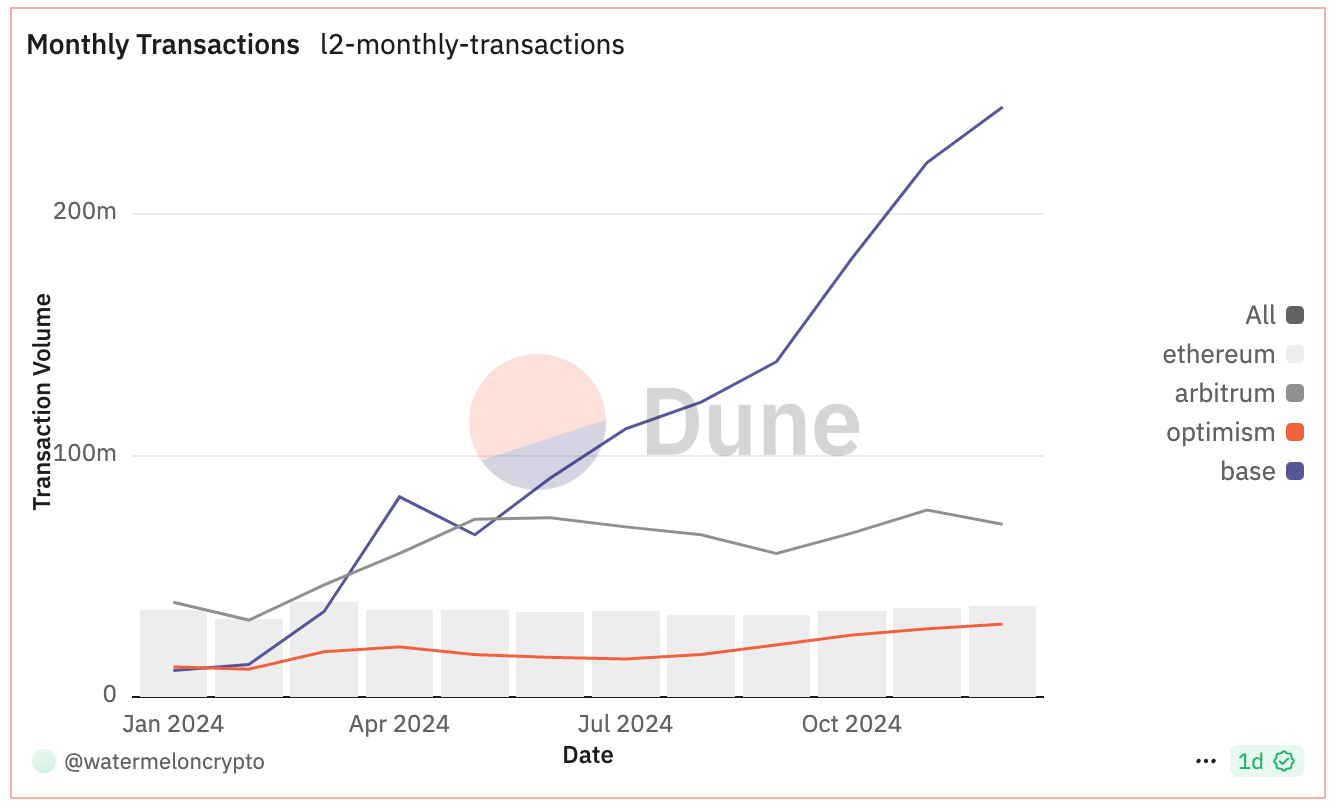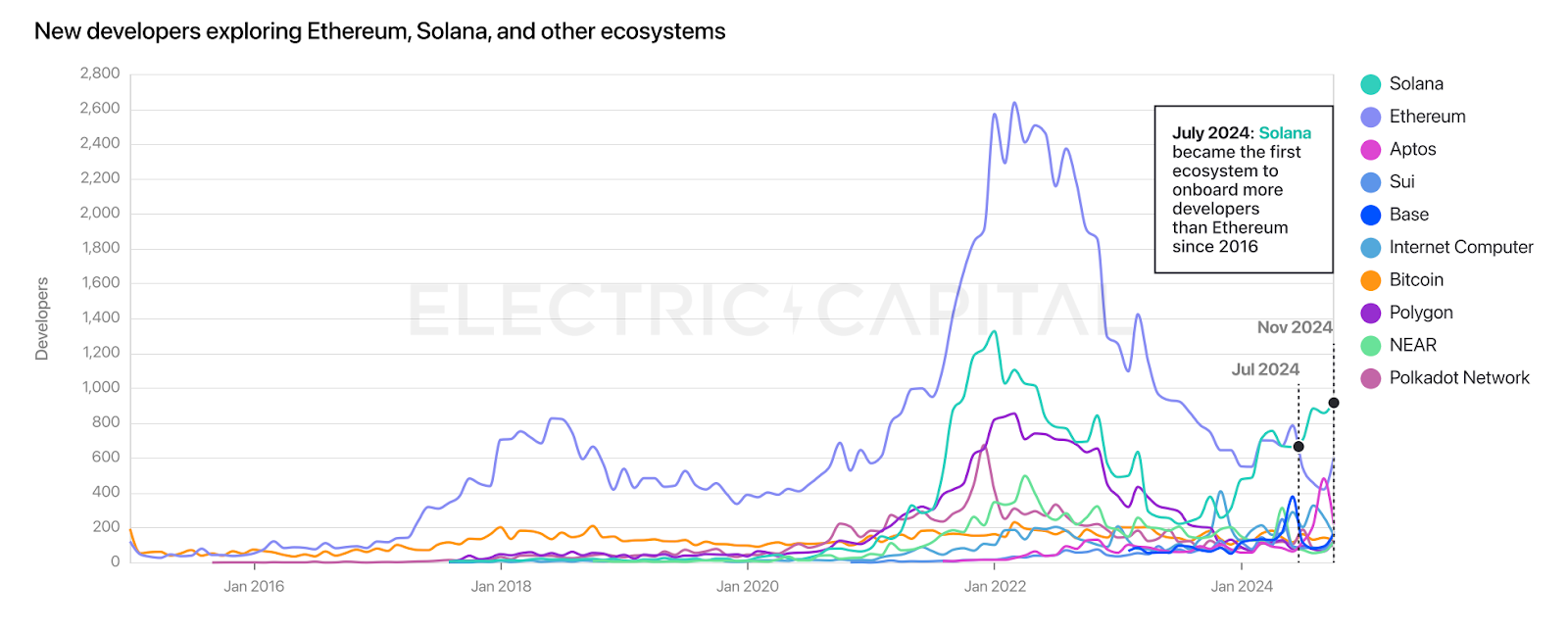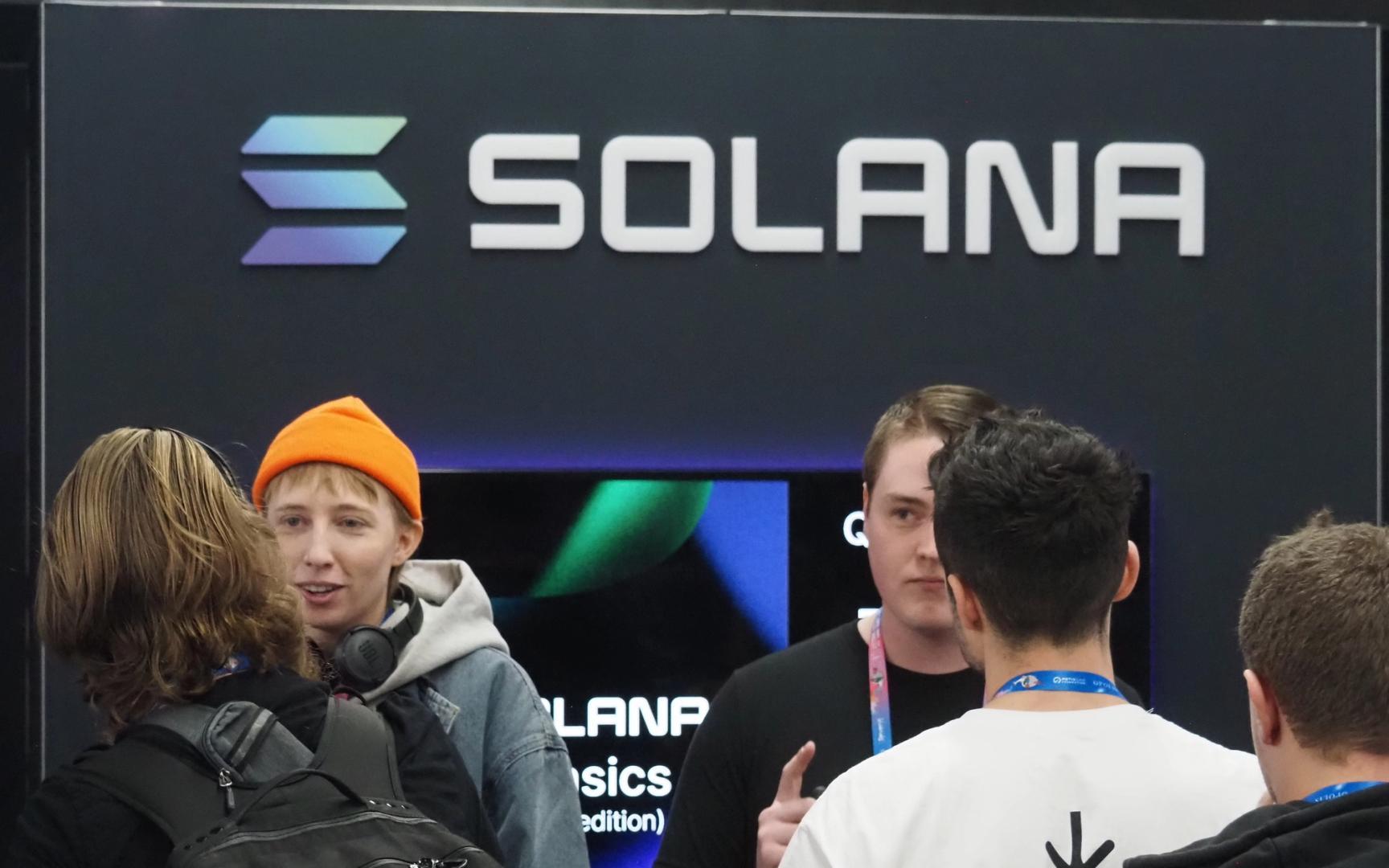Uncategorized
A Year of Crypto Tech In Review

This special edition of the Protocol looks back at 2024’s groundbreaking developments and forward to what the coming year might bring for blockchain technology.
Let’s dive into the milestones, trends, and predictions shaping the next era of crypto.
This article is featured in the latest issue of The Protocol, our weekly newsletter exploring the tech behind crypto, one block at a time. Sign up here to get it in your inbox every Wednesday.
1. A Look Back: Top Crypto Tech Milestones of 2024
Ethereum’s Duncun Upgrade: 2024 marked Ethereum’s most significant network upgrade yet. Ethereum activated the Cancun-Deneb (Dencun) upgrade, a landmark improvement designed to enhance scalability and reduce data fees, marking a pivotal step in the network’s evolution. Duncun introduced proto-danksharding, a mechanism aimed at lowering costs for Layer-2 rollups by simplifying data availability and improving transaction throughput. The changes, though immensely debated, aimed to benefit developers and pave the way for further innovations in Ethereum’s roadmap, reinforcing its position as the leading smart contract platform.
Solana Locks in Value: Solana’s DeFi TVL hit $9 billion in total value locked (TVL) for the first time in three years, with its DeFi ecosystem experiencing even more growth. This achievement reflects increased user engagement and the expansion of decentralized applications on the platform. This growth was significantly helped by institutional adoption and major integrations. Financial giants like Franklin Templeton and Société Générale leveraged Solana for tokenized asset projects. Solana also expanded its reach with Robinhood adding SOL to its trading platform and Cboe Global Markets filing for Solana-linked ETFs, signaling increased confidence in its infrastructure.

Quantum Computing’s Warning Bell: Google’s advancements in quantum computing, particularly with its revolutionary quantum chip, raised alarms within the crypto community about the potential threats to blockchain security. The chip’s ability to solve problems far beyond the reach of classical computers reignited debates around Bitcoin’s reliance on traditional encryption methods and the broader implications for the crypto ecosystem. Experts emphasized the urgency of transitioning to quantum-resistant encryption to safeguard cryptocurrencies against future vulnerabilities. While current quantum computers are not yet capable of compromising blockchain networks, Google’s progress underscored the need for proactive measures to ensure the long-term security and resilience of digital assets.
Layer-2 Adoption Soars: Layer-2 adoption surged as projects like Arbitrum, Optimism, and Base played pivotal roles in addressing Ethereum’s scalability challenges. Arbitrum continued to dominate the Layer-2 ecosystem, crossing 1 billion in transactions, driven by its strong developer support and DeFi integrations. Optimism continued to expand its influence with its OP Stack technology, which enable modular Layer-2 solutions and foster ecosystem-wide collaboration through its integration into Optimism’s Superchain. Base, a Layer-2 incubated by Coinbase, gained significant traction as it leveraged Coinbase’s extensive user base and on-ramps, with Franklin Templeton becoming the first asset manager to launch a tokenized treasury fund on the network.

DeFi Leaders Innovate: Aave became the focus of a new fund launched by Grayscale Investments in October, providing institutional and accredited investors with exposure to its governance token (AAVE) through a traditional investment vehicle; Uniswap Labs announced Unichain, a decentralized Layer-2 blockchain built with Optimism’s OP Stack, designed to enhance transaction speed, reduce costs, and improve cross-chain interoperability, with plans for a 2025 mainnet launch; and MakerDAO rebranded to Sky as part of its Endgame Plan, introducing new governance (SKY) and stablecoins (USDS), autonomous «Sky Stars,» deflationary tokenomics, and a roadmap for transitioning fully from MKR to SKY tokens.
2. Emerging Trends for 2025
AI x Blockchain: The integration of artificial intelligence and blockchain is set to revolutionize identity verification, predictive analytics, and smart contract automation — and, hopefully, curtail negative side effects of AI.
Regulated Crypto Hubs: Jurisdictions like Hong Kong, Dubai, and Singapore are positioning themselves as crypto-friendly innovation centers, attracting startups and institutional investors alike.
Interoperability Takes Center Stage: Cross-chain protocols will dominate development, enabling seamless asset transfers and collaboration between blockchain ecosystems.
3. Developer Spotlight: 2024 in Numbers
The Electric Capital Developer Report: The report highlighted sustained growth in blockchain development with a 35% increase in active developers. Ethereum, Solana, Polkadot, Base, and Polygon led the pack, showcasing their strong developer communities. Solana was the biggest draw for new developers, bringing in 7,625 new developers in 2024, surpassing Ethereum. Solana’s appeal, driven by its low fees, fast transactions and many memecoins, positions it as a formidable competitor in the smart contract arena.

4. What to Watch in 2025
Ethereum’s Pectra Upgrade: Ethereum’s upcoming Pectra upgrade has been split into two phases, Prague and Electra, to ensure a smoother rollout of key improvements to the consensus and execution layers. The Electra phase will enhance validator efficiency, bolster network security, and introduce improved mechanisms for managing validator exits.
Scaling Solutions: ZK-rollups and modular blockchains will drive the next wave of scalability, ensuring smoother user experiences. Zero-knowledge proofs are emerging as a transformative technology, enabling enhanced privacy and efficiency while paving the way for a future where blockchain networks can scale seamlessly without compromising decentralization.
Decentralized Identity: The rise of decentralized identity solutions could redefine how users interact with Web3 platforms, emphasizing privacy and ownership.These systems leverage blockchain technology to give users control over their personal data, allowing them to verify their identities without relying on centralized authorities.
5. Final Thought
2024 set the stage for crypto’s next chapter, with breakthroughs in scalability, DeFi, and security shaping a transformative year ahead.
Uncategorized
AVAX Surges 10.7% as Bullish Breakout Signals Strong Momentum

Avalanche’s AVAX token has broken out of its multi-week correction phase, demonstrating remarkable strength despite ongoing geopolitical tensions affecting cryptocurrency markets.
The broader market gauge, CoinDesk 20 Index (DLCS), has demonstrated exceptional bullish momentum, surging from 1403.33 to 1461.17 in the last 48 hours, representing a 4.12% gain, while the overall range spans 95.56 points (6.97%) from the low of 1365.61 to the high of 1461.17.
The recent price action of AVAX shows accelerated momentum with the formation of a bull flag pattern and decisive breakout above $20.40, coinciding with significant institutional developments in the ecosystem, according to CoinDesk Research’s technical analysis data.
Technical Analysis Highlights
- AVAX demonstrated remarkable strength, surging from 18.87 to 20.89, representing a 10.7% gain.
- Price action reveals a clear bullish trend with higher lows forming a strong support trendline around 19.50.
- After consolidating between 19.30-19.70 on April 20, AVAX experienced a significant breakout on April 21, with volume increasing substantially as the price pushed above 20.00.
- The most recent 48 hours show accelerated momentum with the formation of a bull flag pattern and a decisive breakout above 20.40, suggesting further upside potential.
- Key resistance at 20.90 now becomes the level to watch, with Fibonacci extension targets pointing to 21.50 as the next significant objective.
- In the last 100 minutes, AVAX surged from 20.61 to 21.04, representing a 2.1% gain.
- After consolidating between 20.50-20.60 during the 13:20-13:40 timeframe, price formed a solid base before initiating a powerful upward move.
- The decisive breakout occurred at 14:40 with extraordinary volume (146,387 units), creating a strong support level at 20.80.
- Multiple high-volume candles followed between 14:44-14:48, pushing the price through the critical 21.00 psychological barrier with the highest volume spike (142,112 units) at 14:47.
- This breakout completes the bullish pattern established in the previous 48 hours, with Fibonacci extension targets now suggesting 21.50 as the next significant objective.
Disclaimer: This article was generated with AI tools and reviewed by our editorial team to ensure accuracy and adherence to our standards. For more information, see CoinDesk’s full AI Policy. This article may include information from external sources, which are listed below when applicable.
External References:
- «Avalanche (AVAX), Toncoin (TON) and Kaspa (KAS): Can They Recover?« — CryptoDaily, published April 2025.
- «Avalanche (AVAX), Polkadot (DOT) Rebound on the Horizon? Harmonic Pattern Signals Bullish Move» — Bitzo, published April 2025. — Bitzo, published April 2025. — Bitzo, published April 2025.
- «Avalanche Price Prediction« — Cryptopolitan, published April 2025.
- «Avalanche Card Unveiled: Will It Spark Bullish Momentum for AVAX?« — Coinpedia, published April 2025.
Uncategorized
Janover Buys Another $11.5M in SOL, Gets Renamed Amid Crypto Treasury Strategy Play

Janover (JNVR), the real estate-focused fintech company with a Solana (SOL) treasury strategy, has been renamed to DeFi Development Corp and purchased another $11.5 million worth of SOL tokens, the firm said on Tuesday.
The move brings the company’s total SOL holdings to 251,842, including staking rewards, the company said. That’s valued at around $36.5 million, with SOL currently trading around $145.
JNVR shares were down 2.5% today at $38.3, well below last week’s peak just shy of $80. However, the stock is still up over 800% since adopting the crypto treasury strategy. SOL advanced nearly 5% over the past 24 hours, with the broader crypto market climbing higher.
The purchase was part of the Boca Raton, Florida-based company’s new crypto bet to position itself as the first U.S.-listed company with a treasury strategy centered on Solana and its native token SOL.
As part of the strategy, the firm seeks to accumulate SOL and operate one or more validators to secure the blockchain. The pivot happened after a team of former executives of crypto exchange Kraken bought a majority stake in the firm earlier this month.
Read more: Janover Takes Page From Saylor Playbook, Doubling SOL Stack to $20M as Stock Soars 1700%
The purchase was made using funds from a $42 million financing round the company completed earlier this year. Based on the latest figures, each share of the company represents 0.17 SOL, up 62% from its last crypto purchase, according to the press release.
The firm will also change its ticker to DFSV on the Nasdaq exchange at a future date to reflect its new name.
Last week, the company announced a strategic partnership with Kraken with plans to delegate part of the exchange’s SOL holdings to stake to validators operated by DeFi Development Corp. The firm also teamed up with BitGo to acquire locked tokens via over-the-counter markets.
Uncategorized
Arch Labs Raises $13M in Funding for Bitcoin-Based Smart Contracts

Bitcoin decentralized finance (DeFi) developer Arch Labs raised $13 million in funding toward building «ArchVM,» which the developers say will provide smart-contract functionality on the original blockchain.
The funding round, which valued the company at $200 million, was led by Pantera Capital, according to an announcement on Tuesday.
Arch’s plans to enable decentralized applications and protocols natively on Bitcoin.
ArchVM will handle off-chain computations to enable «Turing-complete smart contracts at the Bitcoin base layer» and provide Solana-like transaction speeds, Arch Labs said in the announcement.
The goal of introducing smart contracts to Bitcoin began to gather steam in October with the release of the BitVM computing language.
Numerous projects are now using BitVM as the basis for bringing smart contracts to Bitvcoin via layer-2 networks or bridges. Arch’s aim is to avoid the need to bridge assets to layer-2s, which could present additional risks.
-

 Fashion6 месяцев ago
Fashion6 месяцев agoThese \’90s fashion trends are making a comeback in 2017
-

 Entertainment6 месяцев ago
Entertainment6 месяцев agoThe final 6 \’Game of Thrones\’ episodes might feel like a full season
-

 Fashion6 месяцев ago
Fashion6 месяцев agoAccording to Dior Couture, this taboo fashion accessory is back
-

 Entertainment6 месяцев ago
Entertainment6 месяцев agoThe old and New Edition cast comes together to perform
-

 Sports6 месяцев ago
Sports6 месяцев agoPhillies\’ Aaron Altherr makes mind-boggling barehanded play
-

 Business6 месяцев ago
Business6 месяцев agoUber and Lyft are finally available in all of New York State
-

 Entertainment6 месяцев ago
Entertainment6 месяцев agoDisney\’s live-action Aladdin finally finds its stars
-

 Sports6 месяцев ago
Sports6 месяцев agoSteph Curry finally got the contract he deserves from the Warriors





